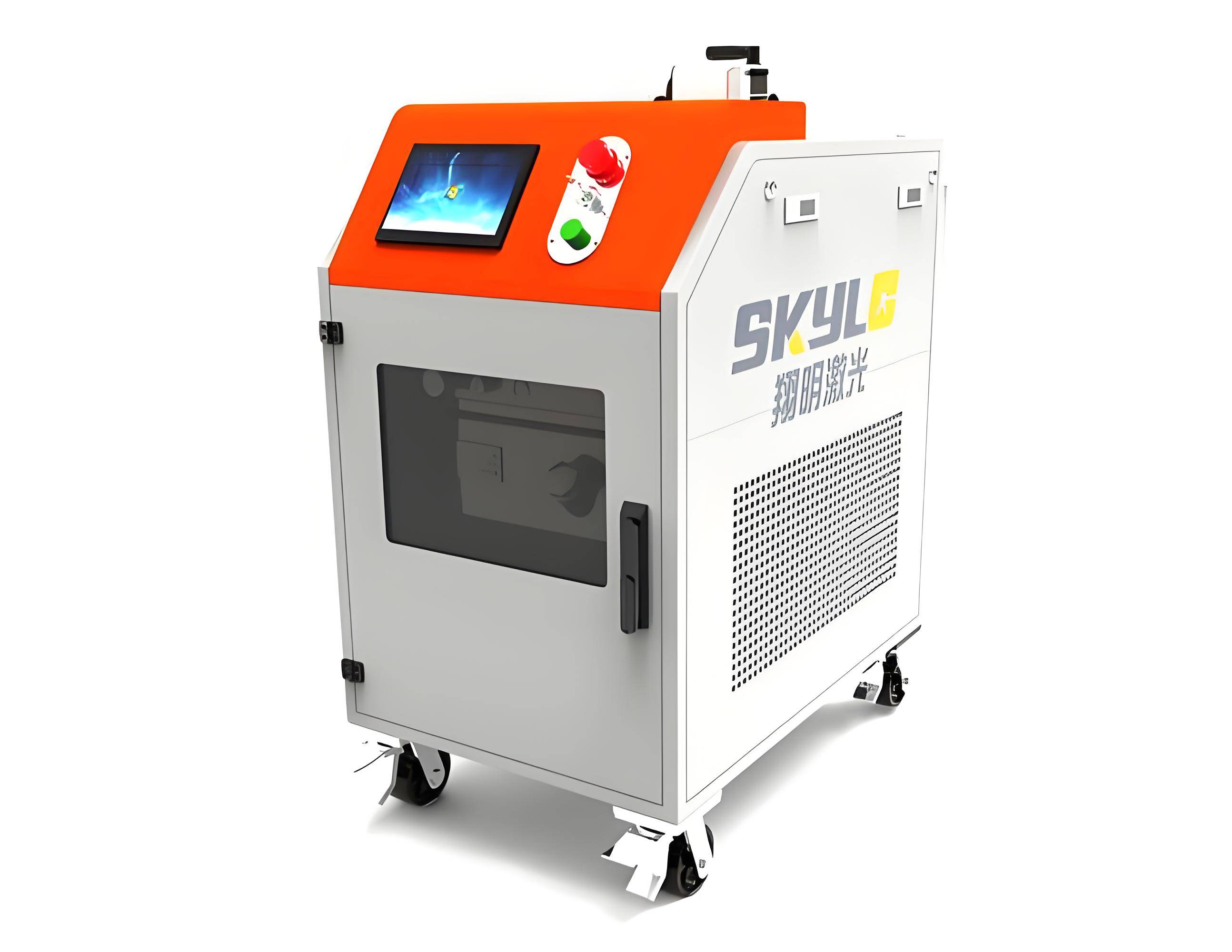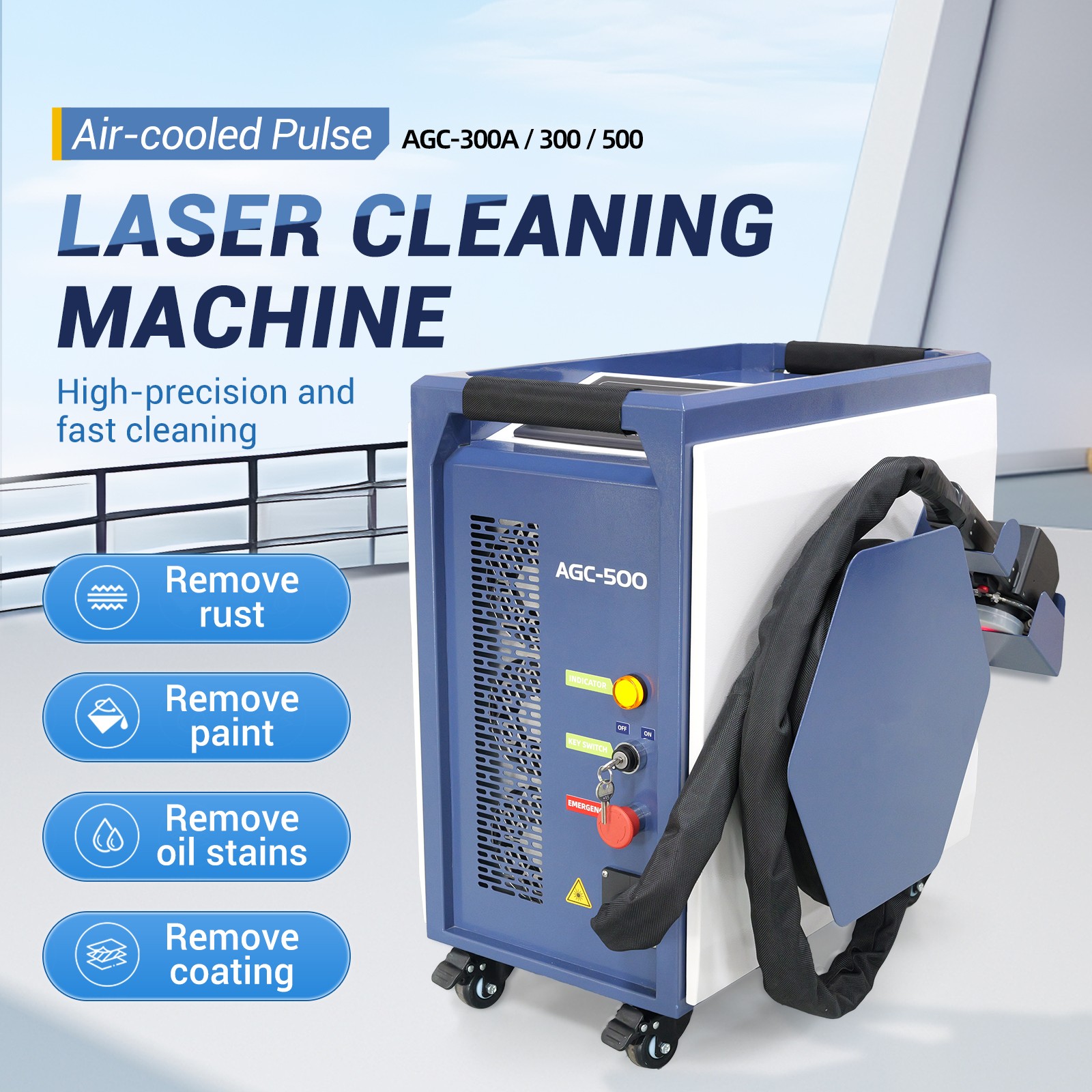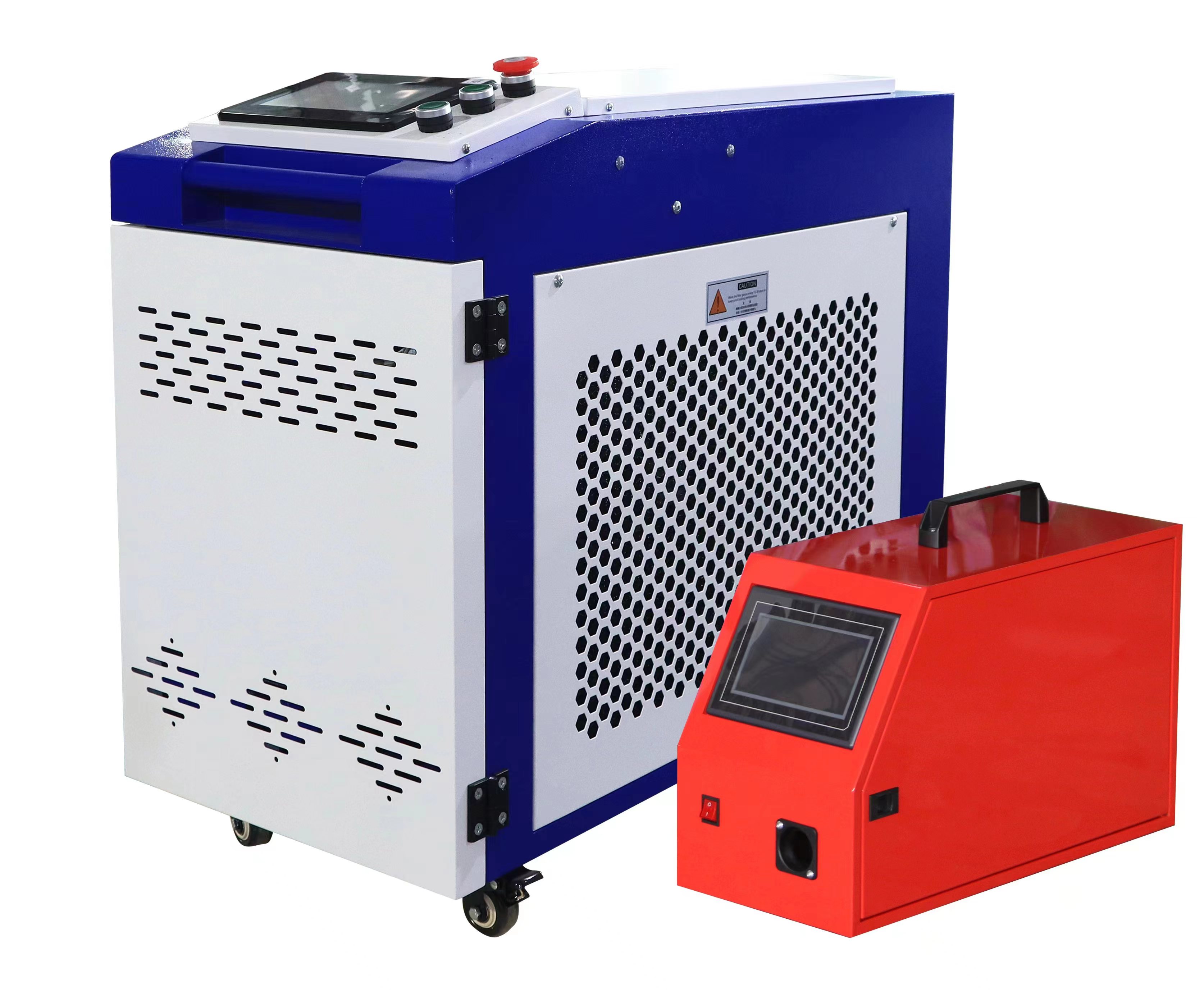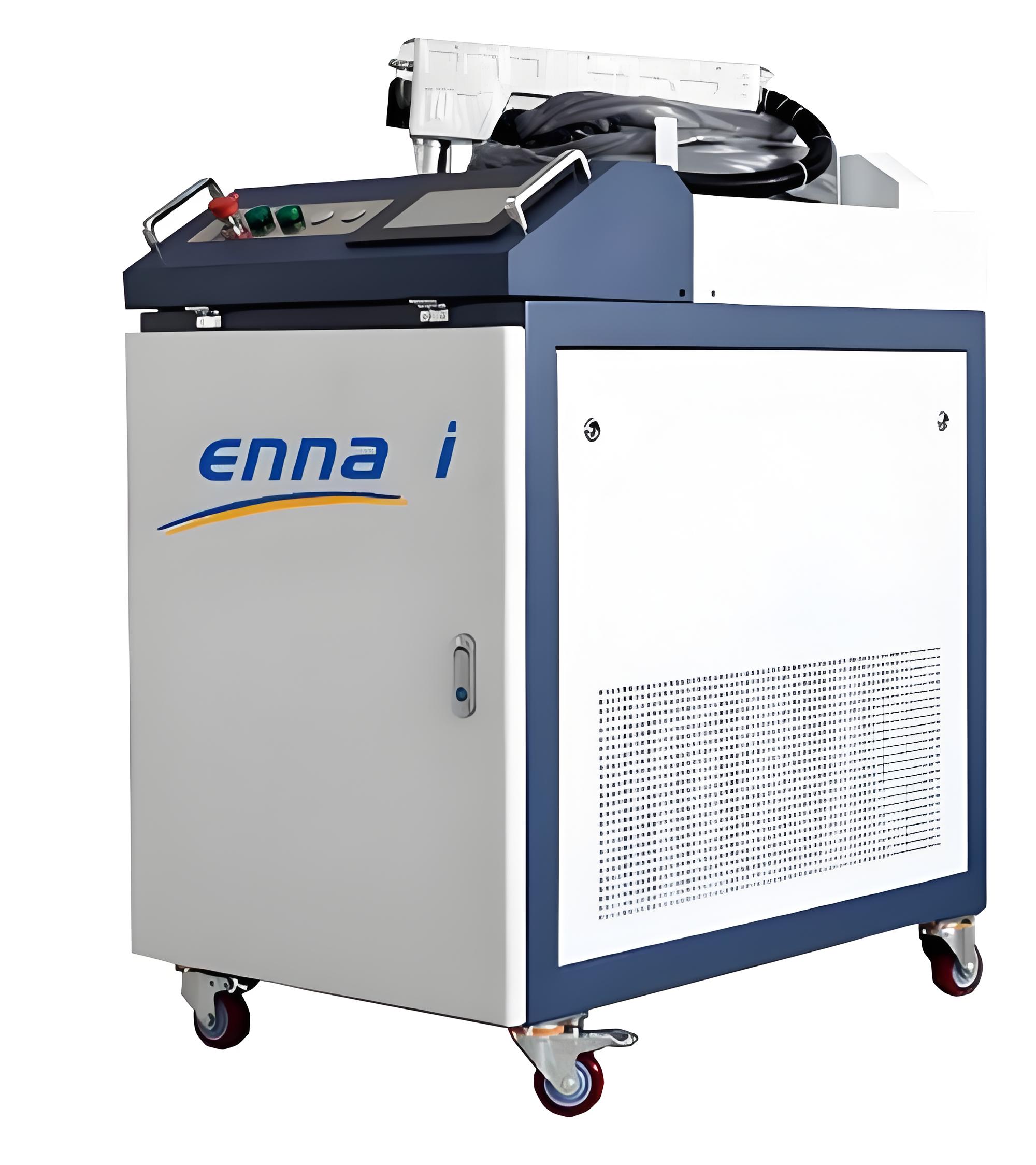Having spent years working with industrial cleaning technologies, I’ve seen laser rust removal machines go from niche tools to game-changers in metal restoration. When people ask me, “Is operating a laser rust removal machine difficult?” I get it—the idea of wielding a high-tech laser sounds intimidating, like something out of a sci-fi movie. But the truth is, with the right guidance and a bit of practice, these machines are more approachable than you might think. In this article, I’ll break down what laser rust removal involves, the skills needed to operate the machine, step-by-step tips for safe and effective use, and common challenges you might face. My goal is to demystify the process and help you decide if this tool is right for your needs, whether you’re a hobbyist or a professional.

What Is a Laser Rust Removal Machine?
Before diving into the operation, let’s clarify what a laser rust removal machine does. These devices use focused laser beams to remove rust, paint, grease, or other contaminants from metal surfaces without damaging the underlying material. Unlike traditional methods like sandblasting or chemical cleaning, laser cleaning is non-abrasive, eco-friendly, and precise, making it ideal for restoring delicate or valuable metal parts.
I first encountered a laser rust removal machine while helping a client restore vintage car parts. The machine zapped away decades of rust in minutes, leaving a pristine surface that looked almost new. It was impressive, but I also noticed it required some know-how to get those results. So, how hard is it to operate one? Let’s explore the factors that affect the learning curve.
Factors That Influence Operation Difficulty
The difficulty of operating a laser rust removal machine depends on several factors: the machine’s type, your experience level, the complexity of the task, and the training provided. Here’s a breakdown:
Machine Type and Features
Laser rust removers come in various forms, from portable handheld units (50W-200W) to industrial-grade systems (1000W+). Handheld models are generally easier for beginners, with simpler controls, while high-power systems often have advanced settings like pulse frequency or beam width that require more technical knowledge. For example, I’ve used a 100W handheld laser that felt as intuitive as a power washer, but a 1000W machine I tested required precise adjustments to avoid damaging delicate surfaces.
User Experience
If you’re comfortable with power tools or machinery, you’ll likely find laser rust removal machines manageable. Beginners with no technical background might need a few hours of practice to feel confident. I’ve trained people with zero experience who were producing clean results within a day, so it’s not rocket science!
Task Complexity
Simple tasks, like removing light rust from flat steel, are straightforward. Complex jobs, like cleaning intricate machinery or historical artifacts, demand more skill to adjust the laser settings and avoid overexposure. I once worked on a rusty antique clock gear, and it took careful tweaking to preserve the fine details.

Training and Resources
Most manufacturers provide manuals, video tutorials, or even in-person training. If you skip these, the learning curve steepens. I always recommend reading the manual thoroughly and watching any available demos before starting.
To give you a clearer picture, here’s a table comparing different types of laser rust removal machines and their operational complexity:
| Machine Type | Power Range | Ease of Use | Best For |
|---|---|---|---|
| Handheld Portable | 50W-200W | Easy to moderate | Small projects, DIY, light rust |
| Backpack-Style | 100W-300W | Moderate | Mobile use, medium-scale jobs |
| Industrial Stationary | 500W-1000W+ | Moderate to difficult | Large-scale, precision tasks |
| Fiber Laser Systems | 100W-2000W | Difficult, requires training | Complex or delicate surfaces |
Skills Needed to Operate a Laser Rust Removal Machine
You don’t need to be an engineer to use a laser rust removal machine, but a few basic skills and habits will make the process smoother:
Basic Technical Understanding: You should be comfortable adjusting settings like power, pulse frequency, or scan speed. These are usually controlled via a digital panel or touchscreen, similar to setting up a modern appliance.
Hand-Eye Coordination: For handheld units, you’ll need steady hands to guide the laser beam evenly across the surface, much like spray-painting.
Safety Awareness: Lasers are powerful tools, so understanding safety protocols (like wearing protective glasses) is critical.
Attention to Detail: Recognizing when to adjust settings based on rust thickness or surface type takes practice but is key to good results.
When I first used a laser rust remover, I was nervous about “messing up” the metal. But after a few test runs on scrap steel, I got the hang of adjusting the beam to match the rust level. It’s less about technical expertise and more about patience and observation.

Step-by-Step Guide to Operating a Laser Rust Removal Machine
Here’s a practical guide to using a laser rust removal machine, based on my experience with both handheld and industrial models. Follow these steps to get started safely and effectively:
Read the Manual and Safety Guidelines
Every machine is different, so start with the manufacturer’s manual. Pay close attention to safety warnings, as lasers can cause eye damage or burns if mishandled. Always wear laser safety glasses rated for the machine’s wavelength (usually 1064nm for fiber lasers).
Set Up the Machine
Place the machine on a stable surface or wear it (for backpack models). Ensure it’s connected to a reliable power source (most require 220V).
Check that the cooling system (air or water-based) is functioning, as overheating can damage the laser.
For handheld units, attach the laser head and ensure the cable isn’t tangled.
Prepare the Workpiece
Clean loose debris from the metal surface with a brush or cloth to improve laser efficiency.
Secure the workpiece to prevent movement during cleaning. I once had a small part shift mid-process, causing uneven results—clamping it fixed the issue.
Adjust Laser Settings
Power: Start with a low setting (e.g., 20-30% for a 100W machine) for light rust and increase for heavier rust.
Pulse Frequency: Higher frequencies (e.g., 20-50 kHz) are better for delicate surfaces; lower frequencies (5-10 kHz) tackle thick rust.
Scan Speed: Faster speeds for light cleaning, slower for stubborn rust.
Most machines have pre-set modes for common tasks—use these if you’re a beginner.
Test on a Scrap Piece
Before working on your main project, test the settings on a similar piece of metal. This helps you dial in the power and speed without risking damage. I always keep a pile of rusty scrap for this purpose—it’s saved me from costly mistakes.

Operate the Laser
Hold the laser head 10-20cm from the surface (check the manual for the exact focal distance).
Move the beam steadily in a sweeping motion, like painting, to cover the area evenly. Avoid lingering too long in one spot to prevent overheating the metal.
Monitor the surface for a clean, shiny finish. Adjust settings if you see incomplete rust removal or surface damage.
Inspect and Clean Up
After cleaning, wipe the surface with a damp cloth to remove any residual dust.
Check for missed spots or damage. If needed, go over the area again with adjusted settings.
Maintain the Machine
Clean the laser lens with a microfiber cloth and lens cleaner after each use.
Store the machine in a dry, dust-free environment to protect its components.
Common Challenges and How to Overcome Them
Even with practice, you might hit some bumps. Here are challenges I’ve faced and how to tackle them:
Uneven Cleaning: If the rust isn’t coming off uniformly, check your scan speed or beam focus. Slow down your hand movement or adjust the focal distance.
Surface Damage: Overusing high power on thin or delicate metals can cause discoloration or pitting. Always start with low power and test on a scrap piece.
Eye or Skin Irritation: Never operate without proper safety gear. I once skipped glasses during a quick test (bad idea!) and felt eye strain afterward—lesson learned.
Machine Overheating: If the laser shuts off or slows down, let it cool for 10-15 minutes. Ensure proper ventilation and check the cooling system.
Slow Progress on Heavy Rust: Thick rust layers require multiple passes or higher power. Be patient and increase settings gradually.
My Personal Experience
A few years ago, I was tasked with restoring a rusted industrial machine part for a client. I rented a 200W handheld laser rust remover, expecting a steep learning curve. To my surprise, after watching a 10-minute tutorial and practicing on some rusty bolts, I was able to clean the part in under an hour. The key was starting with low power and gradually increasing it as I got comfortable. The client was thrilled with the mirror-like finish, and I was hooked on the technology.
On another project, I struggled with a 1000W machine for a large steel structure. The complex settings overwhelmed me at first, but after consulting the manual and tweaking the pulse frequency, I found the sweet spot. These experiences taught me that while laser rust removal isn’t plug-and-play, it’s manageable with a bit of effort.

Comparing Laser Rust Removal to Other Methods
To put the difficulty in context, here’s how laser rust removal compares to other rust removal methods:
| Method | Ease of Use | Speed | Pros/Cons |
|---|---|---|---|
| Laser Rust Removal | Moderate (requires training) | Fast | Precise, eco-friendly; higher cost |
| Sandblasting | Moderate to difficult | Moderate | Effective but messy, abrasive |
| Chemical Cleaning | Easy | Slow | Affordable but hazardous, messy |
| Wire Brushing | Easy | Very slow | Cheap but labor-intensive, imprecise |
Laser rust removal is more technical than wire brushing but less messy and safer than chemical methods. Its learning curve is comparable to sandblasting but offers superior precision.
Tips for Beginners
If you’re new to laser rust removal, here are some tips to ease you into it:
Start Small: Begin with a low-power handheld unit for simple projects like cleaning tools or car parts.
Watch Tutorials: YouTube and manufacturer websites often have detailed videos. I’ve found these more helpful than manuals for visualizing techniques.
Practice Patience: Don’t rush—take time to test settings and get comfortable with the machine’s feedback.
Invest in Safety Gear: Quality laser safety glasses and gloves are non-negotiable.
Join Online Communities: Forums like Reddit or industry groups have users sharing tips and troubleshooting advice.
Conclusion
Operating a laser rust removal machine isn’t inherently difficult, but it does require some learning and practice. With a basic understanding of the machine’s settings, proper safety precautions, and a bit of hands-on experience, most people can master it within a few hours. Whether you’re tackling a small DIY project or a large industrial job, the key is to start with the right equipment, follow a systematic process, and be patient as you learn. The payoff—a clean, rust-free surface without chemicals or abrasives—is well worth the effort.
If you’re curious about laser rust removal or have specific questions about your machine, share them in the comments—I’d love to help! Below, I’ve answered some common questions to get you started.

Frequently Asked Questions
1. Do I need special training to use a laser rust removal machine?
While formal training isn’t always required, reading the manual and watching tutorials is essential. For industrial models, manufacturer-led training can be helpful.
2. Can I damage the metal with a laser rust remover?
Yes, if the power is too high or you linger too long in one spot. Always test on a scrap piece and start with low power settings.
3. How long does it take to learn to use a laser rust remover?
Most beginners can operate a handheld unit effectively within 2-4 hours of practice. Complex machines may take a day or two to master.
4. Are laser rust removal machines safe for home use?
Yes, if you follow safety protocols, like wearing laser safety glasses and ensuring proper ventilation. Always store the machine securely to prevent unauthorized use.
5. Is laser rust removal worth the cost for small projects?
For occasional DIY projects, renting a low-power unit is cost-effective. For frequent use or professional work, investing in a machine saves time and money compared to other methods.
Have more questions? Drop them below, and I’ll do my best to guide you!






